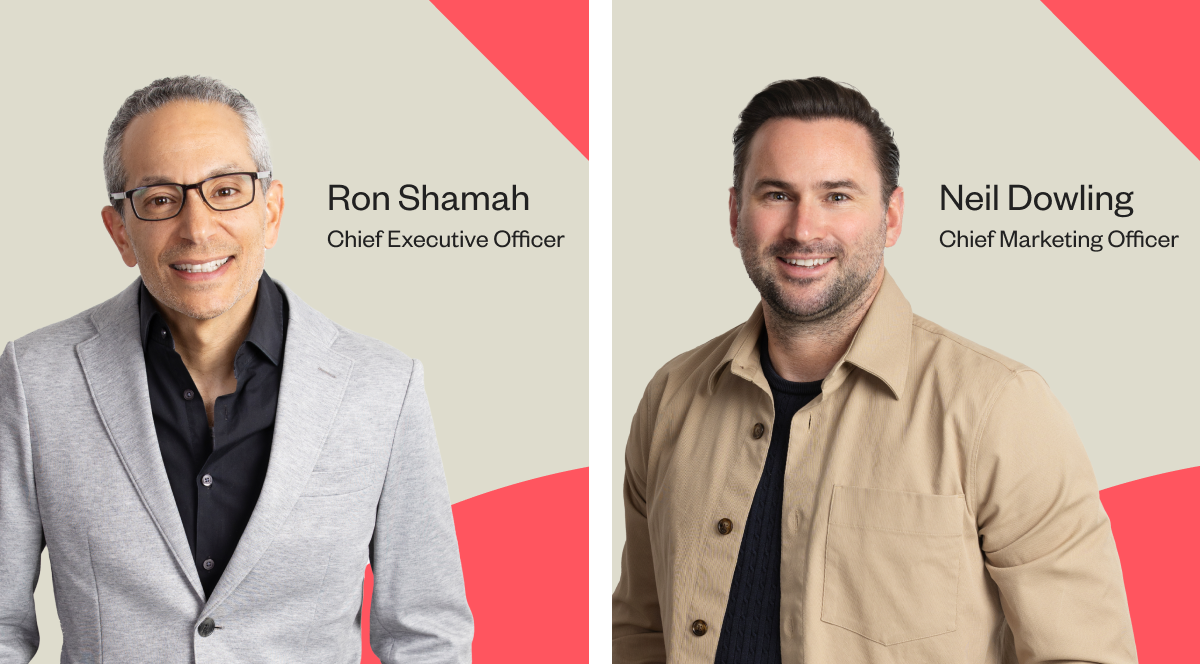
Ron Shamah and Neil Dowling Talk Total Experience



Every consumer has a story of utter frustration with a brand, an incident that required numerous calls, emails, chats and threats to escalate the issue to the CEO before it was finally resolved. And, every consumer has a story of a brand that delivered a near magical experience; the company representative knew exactly what the consumer needed, almost before they needed to ask. Resolution came quickly and easily for the consumer.
What’s the difference between the two brands? The former has segregated the employee experience and customer experience into distinct silos, whereas the latter has focused on the end-to-end experience, and empowered its employees to succeed.
It’s what Ron Shamah, Rightpoint’s Chief Executive Officer and Neil Dowling, Rightpoint’s Chief Marketing Officer, call Total Experience. The two of them have made it the mantra of all Rightpoint client teams. Both Ron and Neil sat down with me to discuss what total experience means for our clients, and for the future of customer and employee loyalty.
What is Total Experience?
ND: Actually, this is a question we addressed at length in a blog post, which happens to be titled, “What is Total Experience.”
Experience isn’t a single touchpoint, it’s a holistic journey that spans across the front, middle, and back office, and all the people who are involved in that journey. As digital has evolved over the last 20 years, various different languages have been used to define what we do. Often with an “X” to stand for “experience” – UX, CX, EX, etc.
Total Experience encompasses all of those X’s, meaning it covers every interaction customers, employees and product have with a brand, both physical and digital. Brands that provide a consistent, positive and enjoyable total experience -- from shopping, to shipping, to customer service -- will be positioned to achieve sustained growth and long term loyalty.
Total Experience encompasses all individuals involved in conversations, the technology and operations supporting interactions, and the organization's ability to deliver for everyone involved. At the heart of this is the understanding of how people, technology and businesses interact with each other. Taking an overarching view will help to drive awareness of the breadth and interdependence of these interactions and enable material improvements in how to determine ROI.
Why is Total Experience relevant to Rightpoint clients, and what is it in response to?
RS: The business world has always evolved, but never at the pace it has currently. Our clients, like all companies across the globe, are facing new pressures that in many ways are unprecedented.
Total Experience serves as a vital framework that empowers companies to thrive in the dynamic and fast-paced business environment of today. It recognizes the interconnected nature of all aspects of the organization, including people, technology, operations, and stakeholder expectations.
By working with Rightpoint to adopt a Total Experience approach, we can help them strategically align their efforts, cut through complexity, and drive end-to-end transformations. This, in turn, enables them to deliver seamless and exceptional experiences across the entire stakeholder ecosystem, fostering growth, competitiveness, and long-term success in the face of evolving challenges.
Why is Total Experience the right approach to address these market pressures?
ND: Because the customer is at the heart, the very center, to Total Experience. Ultimately, when we talk about experience, we’re talking about the experience of an end user or the experience of a customer, who is the reason why a company even exists in the first place. Companies are formed and exist to meet specific needs of people, and Total Experience organizes every aspect of a company on that goal.
On a fundamental basis, a company is made up of products, employees and customers. The customer touches all of these things, which is why it’s critical to think of these things as a holistic system in order to get consistency and to drive the value chain. It’s just a better way of operating.
You talk a lot about loyalty. How does Total Experience cement it?
ND: There are many reasons customers choose to be loyal to a brand. For some it's a product, but for others it may be price, or ease of doing business or even because they really like their account team. It’s highly personalized to the end customer. Brands that can display loyalty across all touchpoints and experiences will enjoy stickier client relationships and ultimately growth.
But it’s not just customer loyalty. Employee loyalty is equally important. Employees who feel empowered to do their job, who feel the company stands behind them, will be loyal. Focusing on Total Experience will boost employee loyalty and make them more productive. Happy employees have a big impact on revenue as well as costs. Attrition, after all, is expensive.
You mentioned earlier that Total Experience covers the front, middle and back offices. What do you mean by that?
RS: If we think of a company as a full system, then we need to think of the frontend, middle and backend functions working in conjunction with one another. A consumer may visit a website to order a new sink for a bathroom renovation. Finding the sink attractive is just a tiny part of her decision. Is it in stock? Will it arrive on time? Will it arrive in good condition? Providing answers to that shopper in real time so that she can make a purchasing decision requires tremendous coordination between the front, middle and back office of that retail organization. For instance, is the website she’s looking at receiving real-time inventory status from the ERP system? Is the supply chain able to secure the inventory to attract customers to the brand, and to replace a sink that arrives broken? If there is an issue with the sink, is there someone she can speak to in order to receive a replacement ASAP?
Rightpoint does a lot of front office transformational programs for clients, such as creating online experiences and digital products that enable our clients to interact with their customers more efficiently, but we can’t leave it there. We also need to think about the full value chains that span the entire ecosystems in which brands operate.
How do the Experiences that we design and create permeate through the full value chain of the organization, including the middle and back office. A customer can have a great experience using an app, but if that service or purchase falls down due to other operational issues inside an organization, it will negatively impact the customer experience and perception of the brand.
Total Experience asks: How do we think about the whole picture so that customers have a consistent experience throughout an organization not just on the front end?
How does Rightpoint deliver that end-to-end consistent experience?
RS: Rightpoint has always led in the Experience space and over the course of our history we have been fortunate to help a diverse range of clients across multiple facets of the Experience continuum – be it customer, employee or actual products. Then if you consider the global scale and industry expertise of Genpact across process and operations, we feel we have a winning proposition for the industry. It is fortunate because we are owned by Genpact and work closely with the company. In fact, Neil joined Rightpoint from Genpact.
Let’s say a reader of this blog is excited to get started on implementing Total Experience within his or her organization. Where is the best place to start?
ND: I think looking at the customer and employee experience as one system is a great place to start. Ask basic questions, such as, do you even have an employee experience program? Does your external brand -- the touchpoints your customers see -- look like the internal brand that your employees see? Do both brands feel and behave the same? Do the teams even talk to one another? These simple exercises will help the reader understand the degree to which a CX and EX are united or disjointed.
Next, get a sense of how your employees interact with your customers. Do they have the tools, data and knowledge they need to have positive interactions with your customers? If not, it’s a pretty good indication that both employees and customers may be frustrated from time to time. But on the positive side, uncovering these potential friction points is a terrific opportunity to improve both your CX and EX, and drive value in the chain.
Okay, the best place to start is by focusing on the CX and EX. What is the first step to take?
ND: The first step is to identify what you want your brand experience to be. There are a lot of brands out there that have invested in their CX and EX. They’ve purchased technology, but they didn’t define the brand experience they’re striving for. The result is employees must learn new tools that they might not want or find helpful, and customers might not understand how to describe the issues they’re facing in terms that employees can understand and address.
Next, roadmap the end-to-end experience journey, from how products are designed and manufactured, to how they’re sold and by whom, to frontline support. This exercise will allow you to identify all the places where employees and customers intersect, as well as where and why friction occurs. Mostly, though, it will provide a detailed roadmap of opportunities to drive value.
It’s also important to look at your technology, and measure its effectiveness at enhancing both your CX and EX. Do your EX platforms match up with your CX? All too often they don’t. That’s why it’s critical to develop a system of measurement so you can understand if your systems can help or hinder your ability to deliver a positive Total Experience.
What should companies measure when they’re analyzing their experience?
ND: This is an interesting area and I think there is potential to improve the measurement set around Experience. The starting point should be to think hard about what the true indicators of success would be for the Experience you're looking to drive across all the different dimensions we’ve discussed. And then set up the measurement and management system to track to these. This is an area we’ll be discussing a bunch with clients in terms of both the right design and potential to measure Total Experience. Start by examining the interactions between employees, and between customers. How do you define a successful outcome? How many interactions have successful outcomes? Is your technology deployed in such a way that successful outcomes are likely? If not, you’ll know where to focus your attention.
Why is Rightpoint well-placed to deliver on Total Experience?
RS: Rightpoint teams have been thinking about the end-to-end experience for the past 16 years, we just haven’t been calling it Total Experience.
Since its founding, Rightpoint teams have naturally picked up a diversity of experiences that cross the CX/EX/PX lines, and this is why we felt our frame of Total Experience was an authentic next step to deliver for our clients. Our teams have the technical chops, we understand that balance between human insight and design and the role of technology. We understand the nuances of how products, employees and customers interact with one another, because we’ve done every bit of it.


